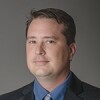SPE’s 2018 Annual Technical Conference and Exhibition ended with an earnest discussion about how best to communicate with the public and other stakeholders in the industry. The final panel discussion of the conference included 2019 SPE President Sami Alnuaim and revolved around the need for the industry to communicate its efforts on sustainability.
Alnuaim has made sustainability the focus of his presidency, and he laid out five focus points during his presentation: improving processes, investing in gas and renewables for power generation, enhancing environmental stewardship, expanding noncombustion uses for crude oil, and spreading social and economic benefits from industry operators.
“If we want to address sustainability,” Alnuaim said, “we need to present it from different angles that I hope will move the current image of our industry from a black image to a more-green image.”
Admittedly, Alnuaim’s objectives will not come easy. “It’s very tough to do that,” he said. Echoing the maxim that one cannot control what one cannot measure, he added, “We need to quantify that.”
“Intrinsically, one of our problems has been we don’t actually measure (sustainability),” said Rosa Swartwout, a principal scientist at Baker Hughes, a GE company, and another member of the panel. “Sustainability has a great line. We all love what it sounds like. We’re not really sure what it means, though, other than we all like it. … As an industry, we’ve provided a lot of innovations that actually have contributed to sustainability. But we have to quantitate them.”
To that end, Jack Nassab, a sustainability engineer from Schlumberger, presented his company’s Stewardship Tool, a web-based program designed to quantify potential environmental and social effects of oil and gas operations.
The tool uses radar plots as visual representations of traditionally nebulous aspects of oil and gas operations—for example, noise production and traffic congestion and road wear. These radar plots can help operators make decisions in favor of sustainability. Is it better to pipe water to a site or deliver it by truck? Are noise abatement efforts necessary?
The tool aims to help operators answer these questions in a quantitative way, but its makers see it as being useful externally as well as internally.
“The reason Schlumberger developed the tool is because we’re quantifying the footprint of the wellsites and operations as a stakeholder-engagement tool,” Nassab said.
More succinctly, Swartwout said, “If we are not measuring it, how can we communicate it to external stakeholders?”
The Stewardship Tool is still in development, but plans are for IPIECA, the global oil and gas industry association for environmental and social issues, to be its host once it is deemed ready.
While the presentation appeared to hold interest for most at the session, the question-and-answer portion highlighted the challenges of public perception and the industry.
“It strikes me that most of what we heard saves money for a company if you choose to spend it,” said Christine Ehlig-Economides, a petroleum engineering professor at the University of Houston who was in the audience. “It’s like insulating your house. If you spend the money up front, it will pay out. But I don’t think it will move the people who are against this industry one iota.”
Laura Slansky, EHS engineer with EXCO Resources, called for more concrete actions from the industry. “We need to address that there is something we need to be discussing and fixing. Propaganda is not the solution. We’re going to have to actually come up with solutions.”


